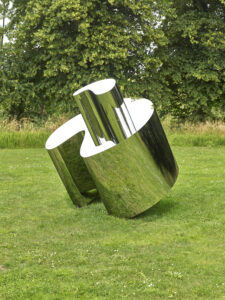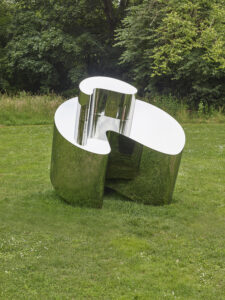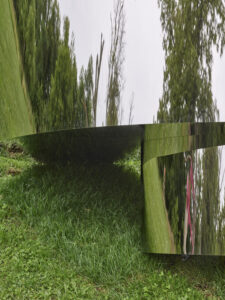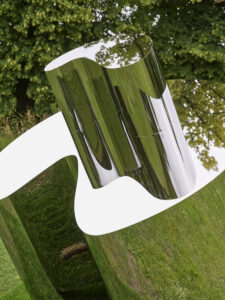Jorinde Voigt: Plenar
Text by Jesi Khadivi, Berlin, 2024
Jorinde Voigt’s new body of mirror-polished steel sculptures entitled Plenar consists of two complementary parts like a lock and its key. Derived from the Latin “plenus,” meaning full or complete, Voigt’s sculptural thought-models act as transitional spaces, contact zones, and liminal areas, giving rise to a third space that dialectically arises from two parts. These intersections serve as transparent sites of hybridity, merging opposites.
Voigt’s process begins with spontaneous hand drawings that evolve from the archetypal shape of the torus, a geometric form explored by psychoanalyst Jacques Lacan that lacks a clear inside or outside, which she translates into three-dimensional works. The sculptures explore the torus’ structural properties, examining the interplay between interior and exterior, emptiness and fullness, transforming these elements into a state of completeness through inversion and deconstruction. Gaston Bachelard’s assertion that “inhabited space transcends geometrical space” resonates deeply with Voigt’s work. Her sculptures transform physical spaces into lived experiences, transcending mere geometry to engage with the viewer’s imagination and perception.
Voigt’s shapes effectively “close in on themselves,” creating a complete form, one whole out of many parts. Reflective surfaces literally mirror the observer, with biomorphic forms that reach into the collective unconscious and evoke sublime natural imagery. Despite the works’ scale, this play of mirrors appears phenomenologically weightless, suggesting a window or void. The distorted reflections of their surroundings change with every step taken by the observer, creating an effect as if the universe were slightly adrift.















